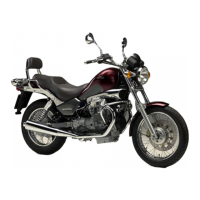
Do you have a question about the MOTO GUZZI NEVADA 750 and is the answer not in the manual?
| Displacement | 744 cc |
|---|---|
| Bore x Stroke | 80 mm x 74 mm |
| Compression Ratio | 9.6:1 |
| Cooling System | Air-cooled |
| Transmission | 5-speed |
| Final Drive | Shaft drive |
| Front Suspension | Telescopic fork |
| Rear Suspension | Swingarm with twin shock absorbers |
| Front Tire | 100/90-18 |
| Rear Tire | 130/90-16 |
| Engine Type | V-twin, 4-stroke |
| Fuel System | Electronic fuel injection |
| Front Brake | Single disc |
| Rear Brake | Single 260 mm disc |
| Seat Height | 770 mm |
| Maximum Power | 48 hp (35 kW) @ 6800 rpm |
Introduction to the manual's purpose and guidance.
Precautions for operating the engine in ventilated areas due to toxic exhaust fumes.
Guidelines for safe refueling and handling of flammable fuel.
Caution about hot engine and exhaust parts after operation.
Instructions and warnings for commencing vehicle operation.
Explanation of dashboard warning lights and their implications.
Safe handling and disposal procedures for used engine and gearbox oil.
Warnings about handling brake/clutch fluid and eye protection.
Safety measures for handling battery acid and explosive gases.
Correct use of the side stand and safety checks before riding.
Guidance on not dismantling components and identifying connector issues.
Visual identification of key vehicle parts and their locations.
Description of the dashboard layout, instruments, and gauges.
Identification and function of various indicator lights on the vehicle.
Step-by-step guide for setting the vehicle's clock time.
Explanation of the digital display functions and indications.
How to view and reset the total and trip odometers.
How to set and interpret the outside temperature display.
Explanation of the function of various control buttons on the handlebar.
How to use the ignition switch for starting and locking the vehicle.
Procedure and safety warnings for locking the steering wheel.
Operation of the turn signal switch and indicator light warnings.
How to operate the headlight switch for low and high beams.
Proper operation of starting and engine stop switches and safety.
Instructions for opening and securing the rider's saddle.
Location and importance of the chassis and engine numbers.
Essential checks before starting the vehicle for safe operation.
Step-by-step guide for refueling the fuel tank and important cautions.
How to adjust rear shock absorber preload for personalized suspension.
Procedures for checking and adjusting the front fork suspension.
Guidelines for the initial engine break-in period to ensure longevity.
Steps for starting a flooded engine or starting in cold conditions.
Guidelines for choosing a safe and stable parking spot.
Description of the catalytic converter and its function.
Proper use and lubrication of the vehicle's stands.
Tips and measures to protect the vehicle from theft.
Fundamental safety rules for operating the motorcycle and rider behavior.
Introduction to scheduled maintenance and recommended service intervals.
Procedures for checking, topping up, and changing engine oil and filter.
Checking and maintaining oil levels for universal joint and gearbox.
Guidelines for tyre pressure, wear, and general condition checks.
Steps for spark plug removal, inspection, cleaning, and replacement.
Procedures for removing side fairings and maintaining the air filter.
Checking fluid levels, pad wear, and topping up brake fluid.
Procedures for battery installation, charging, and electrolyte checks.
How to replace fuses and bulbs, including safety precautions.
Adjusting headlights, indicators, and replacing bulbs for all lights.
Procedures for vehicle cleaning, storage during inactivity, and transportation.
Key physical dimensions and weight details of the vehicle.
Technical details about the engine, including type, capacity, and idle speed.
Information on the transmission, gear ratios, and fuel system.
Technical data on the chassis design and suspension system.
Details on brake system, wheel rims, and tyre specifications.
Information on spark plugs, the electrical system, fuses, and bulbs.
Details on bulb types and identification of dashboard warning lights.
List of tools provided with the vehicle for basic maintenance.
Overview of periodic maintenance checks and service intervals.
Information on available dedicated accessories and where to find more details.

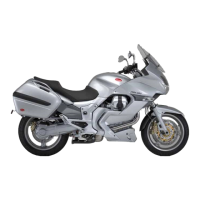
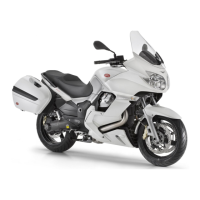

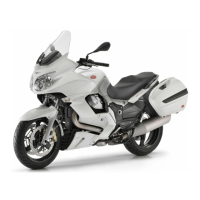
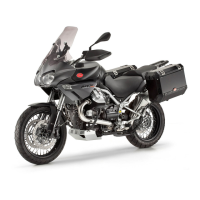
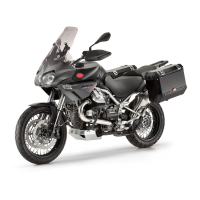
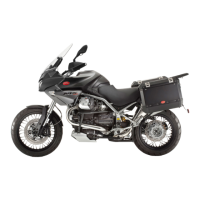
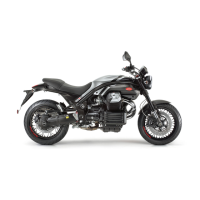
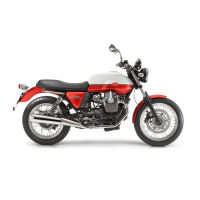
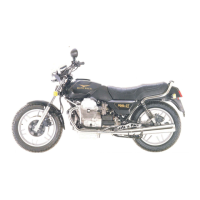
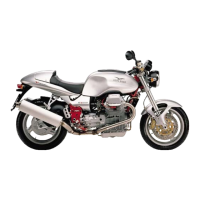
